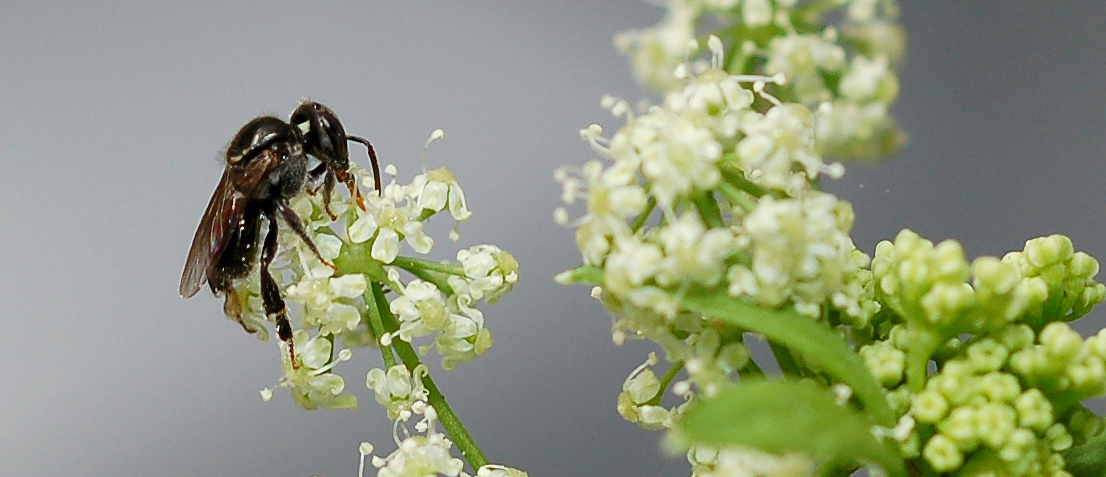
Latest Harvest to Home retail data suggests hidden danger for cabbage
8 June 2018
Take part in a survey to help develop alternative pollinators for horticulture
11 June 2018If you grow potato, tomato, capsicum, eggplant, chilli, tamarillo, goji berry or sweet potato plants in your garden, you can help combat the tomato potato psyllid (TPP) by checking your plants for the tiny insect pest.
What is the tomato potato psyllid?
Tomato potato psyllid (Bactericera cockerelli, also known as TPP) is an exotic plant pest which feeds on a range of host plants, including potato, tomato, eggplant, capsicum, chilli, tamarillo and sweet potato.
It is a significant production pest in other countries where it is present, including the USA, Central America and New Zealand.
TPP is a tiny sap-sucking insect with three stages of development – egg, nymph and adult. All stages are very small (less than 3mm) but can be seen with the naked eye.
Adults and nymphs cause injury to plants when feeding.
- Adult TPP are about 3mm long and resemble small winged cicadas in appearance, but are the size of an aphid. The body is brownish and has white or yellowish markings and a broad white band on the abdomen. Wings are transparent and rest roof-like over the body.
- Nymphs are up to 2mm long and are oval shaped. They have a flattened scale-like appearance. Young nymphs are yellow with a pair of red eyes. Older nymphs are greenish, fringed with hairs and have visible wing buds.
- TPP eggs are less than 1mm long and are attached to the plant by a short vertical stalk. They are usually laid on the lower surface of leaves or as a halo around the leaf edge. Eggs are white when first laid then turn yellow to orange after a few hours.
TPP can carry the bacterium Candidatus Liberibacter solanacearum (CLso) which is associated with zebra chip disease in potato.
Do you have TPP in your garden?
Installing sticky traps in your garden is one way to determine whether you may have TPP in your garden. You can cover the sticky trap with a protective cage to prevent wildlife becoming attached.
Photographs of TPP are available on MyPestGuide from the Western Australian Department of Primary Industries, Resources and Development (DPIRD WA), or you can use the MyPestGuideReporter app to send in your photo for confirmation by one of our expert entomology team.
How can you manage TPP in your garden?
There are a number of approved chemicals and eco-friendly oils available to home gardeners to help control TPP.
The control options have been approved by the Australian Pesticides and Veterinary Medicines Authority following assessment to ensure the safety of the user, public and environment, when used according to the label directions and state legislation.
Below, we’ve listed some of the steps you can take to help you control TPP in your home garden.
Note: if you live in regional WA, report suspect signs of TPP to the Department of Primary Industries and Regional Development before applying any control options.
Treatment guidelines
- Inspect plants regularly so treatments can be applied to keep TPP numbers low.
- When applying a chemical control, concentrate on the underside of the leaves where most TPP adults and nymphs live.
- Follow label instructions and apply at the rate for insect pest control in fruiting and/or tuber vegetables.
- Good practice is to rotate chemical controls.
- Dispose of infested plants using the solarisation technique outlined below.
Solarisation of infested plants
Solarisation is a control technique which uses the sun’s eneregy to combat pests such as TPP. Below is a step-by-step guide on how to solarise infested plants.
- We recommend to first apply an approved insecticide to infested plants from the approved treatment list.
- Place infested plants in double-layer heavy duty black garbage bags.
- Leave bags in direct sun for up to 14 days.
- Bags can then be disposed of in general rubbish.
- Do not dispose of plants in your organics or green waste bin.
How you can help combat TPP
- Check plants in your garden for signs of TPP.
- Check any plants purchased for signs of TPP.
- Comply with any movement restrictions of host plants.
- Avoid moving home-grown plants off your property, even if you are not in a Quarantine Area.
- Apply treatments to control TPP.
- If you live in regional WA, report any suspect signs of TPP to the Department of Primary Industries and Regional Development immediately.
You can also take a look at these frequently asked questions about tomato potato psyllid to better understand this pest and the threat it poses to Australian industries.
Content on this page reproduced with the permission of DPIRD WA.

